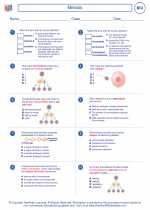Real Image: Explanation and Study Guide
A real image is formed when light rays actually converge at a specific point. This point can be captured on a screen or surface, and the image appears to be in front or behind the surface, depending on the type of lens or mirror that is used.
Formation of Real Image
Real images are formed by converging light rays. This occurs when light rays pass through a convex lens or diverge from a concave mirror and converge at a specific point. The point where the light rays converge is the location of the real image.
Characteristics of Real Image
- Real images are always inverted, meaning they appear upside down relative to the object.
- Real images can be projected onto a screen or surface, making them visible to an observer.
- Real images are formed by actual convergence of light rays, resulting in a sharp and clear image.
- The size of the real image can be larger or smaller than the object, depending on the distance between the object and the lens or mirror.
Study Guide
To understand real images, it is important to grasp the concepts of converging light rays and the characteristics of the lenses and mirrors that produce them. Here are some key points to focus on while studying real images:
- Understand the behavior of light rays when passing through a convex lens and how they converge to form a real image.
- Learn about the focal point and focal length of a convex lens, and how they are related to the formation of real images.
- Explore the role of concave mirrors in producing real images through the convergence of diverging light rays.
- Study the properties of real images, such as inversion, size, and the ability to be projected onto a surface.
- Practice solving problems related to the formation and characteristics of real images, including calculations involving object distance, image distance, and magnification.
By mastering these concepts and engaging in thorough practice, you can develop a strong understanding of real images and their formation through lenses and mirrors.
[Real Image] Related Worksheets and Study Guides:
.◂Biology Worksheets and Study Guides High School. Meiosis

 Worksheet/Answer key
Worksheet/Answer key
 Worksheet/Answer key
Worksheet/Answer key
 Vocabulary/Answer key
Vocabulary/Answer key
 Vocabulary/Answer key
Vocabulary/Answer key
 Vocabulary/Answer key
Vocabulary/Answer key
